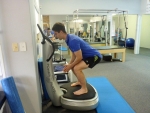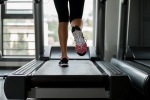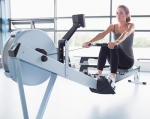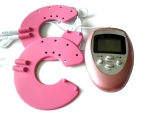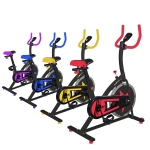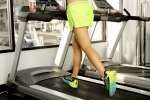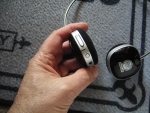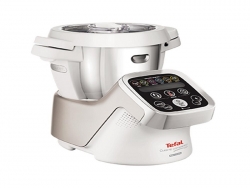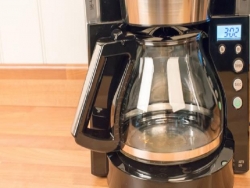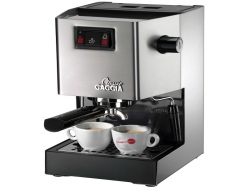US READY - The American's No1 Manufacturer of Exercise tools
Choosing Home Exercise Tools

Choosing Home Exercise Tools
But to get a total workout that is not limited to moderate weather, you will need to either join a gym or equip yourself with home exercise equipment. The major advantage of a home gym is convenience. And it is convenience that can result in a more focused exercise regimen. Home exercise equipment is growing in popularity. In 2000 over $6.7 billion was spent on home exercise equipment.
Granted, health clubs have the advantage of working out with other like-minded individuals. And if you are the type of person that needs inspiration from others, the health club provides that environment. Of course, for singles it is a great place to meet the opposite sex.
The disadvantages are time wasted driving to the health club, waiting in line to use excercise tools and costly membership fees. I personally like to work out first thing in the morning. My time is limited due to my work schedule. The extra time required to drive to a health club would deter regular workouts. Exercise for me is not a social activity. I want to burn as many calories and strengthen as many muscles in as little time as possible. In my case exercising at home is more practical.
Designing A Home Exercise Equipment Gym
If you decide that working out at home makes the most sense, the first consideration will be the location. You may choose the basement. But if it is dark and damp, this is not an inspiring environment. Another consideration is an extra bedroom or part of a family room or den. You want an inviting location that is well ventilated and provides sufficient light. For those that like to keep up with the latest news or the soaps, a room with a television would be appropriate.
If lack of space is a consideration, there is home exercise equipment like folding treadmill or compact home exercise equipment that minimizes required space.
In determining what home exercise equipment to purchase, you need to define your goals and consider the type of exercise equipment that can help you reach those goals. Numerous homes are littered with unused exercise equipment that substitutes for clothes hangers. Too often people buy informercials equipment that is the latest fad. They discover that the exercise bores them, and that the equipment is poorly built and does not deliver on the promises.
Selecting the Proper Equipment
Another common mistake is buying cheap exercise equipment that provides an unsatisfactory workout and requires frequent repairs. This is particularly true when purchasing a treadmill. A cheap treadmill is unstable, noisy and can be a shock to your joints.
How to Choose Home Exercise Equipment
Creating a home gym for workout purposes is a good way to ensure you have access to a daily workout routine without having to join a gym. Investing in your own equipment and avoiding gym memberships will save money and time. There are many types of equipment available, from exercise balls and mats to complex structures that will help with weight training and strength exercises. Choose home exercise equipment that will fit your space, and be used regularly by you or other members of your family.
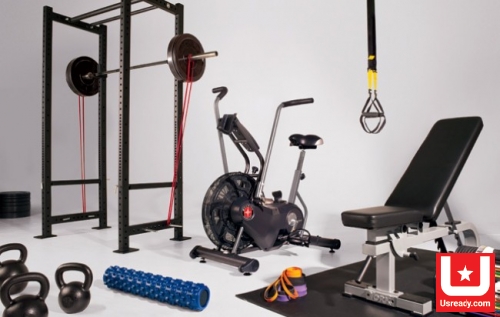
How to Choose Home Exercise Equipment
- Determine the space you have available for exercise equipment
There are machines that can fold up for easy storage, but most large equipment such as treadmills, stationary bikes, and machines you would find in a gym, cannot be moved easily because of their size and weight. Before buying exercise equipment, measure the space you will be using, whether it is a dedicated room, part of a room, or a basement. Measure the equipment while you shop, including all extensions and positions of the machine.
Make sure the space you dedicate to your fitness equipment has good lighting and appropriate ventilation.
- Set exercise goals
Determine what you hope to gain with the exercise equipment you keep in your home. If you want cardiovascular exercise and you like to walk or jog, consider a treadmill. If you want to increase strength, look for a home training machine that offers several different exercises for the whole body. If you prefer yoga and Pilates, purchase mats, balls, and other resistance items.
- Consider who else might use the equipment
If there are other members of your family who will use the equipment, consider their fitness needs as well. If you have small children in the house, make sure the equipment can be safely locked so no one gets hurt.
- Draft a budget
Determine how much you can spend on the equipment, and how you will pay for it. Fitness machines can cost from less than $100 to as much as $10,000. Figure out if you will use savings, pay in cash, or set up payment plans. If you need to save money, consider buying used equipment.
- Shop around and try different types of equipment
Wear workout clothes and try out several types of fitness equipment. Test different brands, and use all speed, weight and other adjustments on the pieces. Take your time and shop around. It is not a good idea to buy equipment on impulse. Ask a sales associate about return options and warranties.
Research products and equipment. While you are shopping, look into safety ratings and consumer reviews.
Tips
If you purchase equipment that you are unfamiliar with, consider enlisting the help of a personal trainer or coach. An expert can help you learn everything you need to know about the equipment and help you design an exercise routine.
Warnings
Do not begin an exercise plan without consulting a doctor, especially if you have an existing heart condition, arthritis, or problems with your back.
Be skeptical of claims and testimonials that say you will lose a certain amount of weight or inches. Avoid products that advertise instant results or unreasonable promises.
>> See more: US Ready
How to Use Gym tools
Fitness centers have a wide variety of equipment for members to use, from weight machines to medicine balls. If you haven't used the equipment before, the thought of using it incorrectly, especially when other people may be watching, is intimidating. It may not be possible to find an employee to provide assistance, forcing you to decide between trying unfamiliar equipment or leaving without completing a workout.
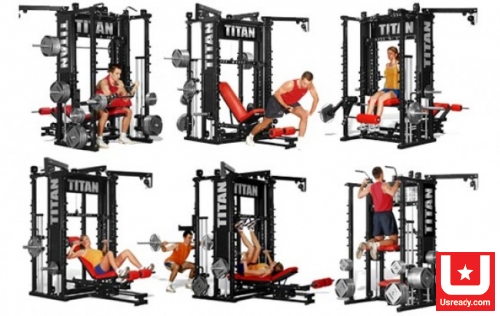
How to Use Gym tools
Method 1: Using Weight Machines
- Look for instructions
Most machines have a short set of instructions and illustration affixed to them.
- Find the adjustments
The machines' seats and benches adjust to the height of the user, and you can adjust moving parts to accommodate your leg or arm length.
- Adjust the machine so your joints line up with the pivot points of the machines, your legs (if sitting) are flat on the floor, and the pads rest comfortably against your limbs.
- Choose a weight that's not too heavy, so you don't run the risk of injuring yourself if you find you can't complete a repetition. If you can complete ten repetitions easily, choose a slightly heavier weight.
- Lift the weights slowly, concentrating on keeping the proper form and exhaling during the lift. Don't adjust your position to lift the weight because you will not get the full benefit of the machine, and you may injure yourself.
Avoid letting the weight clang against the rest of the stack at the end of the repetition, because this annoys others.
- Avoid letting the weight clang against the rest of the stack at the end of the repetition, because this annoys others.
- Wipe your sweat off the machine with your gym towel before leaving it.
Method 2: Lifting Free Weights
- Watch yourself in the mirror
Because you don't have a weight machine to help you maintain the proper form, you have to pay careful attention to how you lift the weight.
- Resist the urge to jerk the weight to "get it started."
If you can't lift and lower the weight slowly and smoothly, choose a lighter weight.
- Work with a spotter if you're going to lift heavy weights
If you can't complete the last couple of repetitions, you could find yourself trapped under a barbell or straining your muscles in an attempt to maintain control. A spotter will help you lift the weight safely so you can finish your set. You can often ask another member to spot you in return for being his or her spotter.
- Add weight to barbells or dumbbells without clanging the plates together
Make sure you have the same weight on each side and that they're secured with collars.
- Rack the weights when you're done. Both dumbbells and plates are racked in order of weight.
- Dry your sweat from the bench when you're done.
Method 3: Working on Aerobic (Cardio) Machines
- Read the instructions carefully.
- Ensure you know how to turn the machine off quickly if you run into trouble. Most aerobic machines will stop when you stop, but some, such as a treadmill, will not.
- Start slowly and increase your speed once you're comfortable with the movement.
- Resist the temptation to talk to the person next to you. Most people play music, watch TV or just listen to the sound of their breathing while they use an aerobic machine. Talk is distracting.
- Decrease speed over several minutes at the end of your workout to allow your body time to cool down. If you stop suddenly, you may lose your balance when you get off the machine.
- Use your gym towel to clean your sweat off the machine.
- Limit your workout to 30 minutes if all the machines are in use, other members are waiting to use a machine or if the fitness center is crowded.


